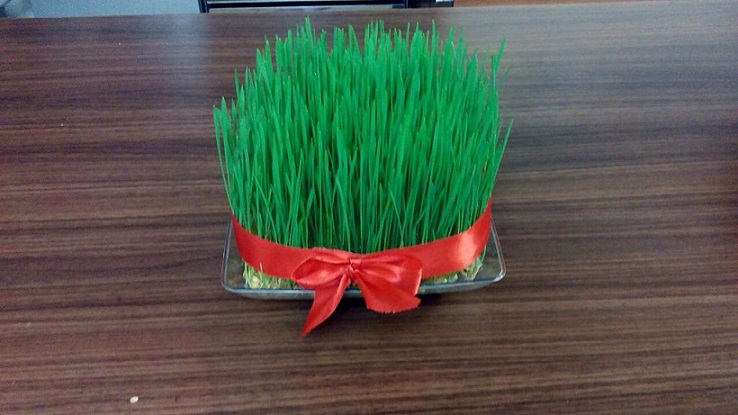Nowruz – Persian New Year

Nowruz is the Iranian New Year or Persian New Year is celebrated worldwide by the Iranians and Turkic peoples, along with some other ethnolinguistic groups, as the beginning of the New Year.
The festival falls on the first day of the first month of the Fasli calendar, followed by the Parsis. This falls in the month of March, according to the Gregorian calendar.
Nowruz is the day of the vernal equinox and marks the beginning of spring in the Northern Hemisphere. It celebrates the rejuvenation of nature and the beginning of new life and is linked to fire. It occurs on 21 March, it is the moment when the sun crosses the celestial equator and equalizes night, and the day is calculated exactly every year, and families gather together to observe the rituals.
It is marked by family and community gatherings, religious services, feasting, and gift-giving. The ten days prior to Nouruz are for the commemoration of the departed. A variety of grains and lentils are soaked so that they will germinate in time for the holiday. These green sprouts are added to a thanksgiving table that also holds a variety of other symbolic objects and foods such as bread, fruit, fresh vegetables, sugar cones, and decorated eggs.
The term Nowruz is a Persian compound word, consisting of the words now and ruz. Now means new and Ruz means the day so it is a new day, often called Nowruz, Jamshed Navroz, or Nauruz.
Although having Iranian and religious Zoroastrian origins, Nowruz has been celebrated by people from diverse ethnolinguistic communities for thousands of years. It is a secular holiday for most celebrants that is enjoyed by people of several different faiths but remains a holy day for Zoroastrians.
In India a small religious community, which exists mostly in Mumbai, is Zoroastrianism, there are at least 100,000 Zoroastrians in India. The Zoroastrian groups are regarded as either Parsi or Irani depending on the time of migration to India. The word Parsi in the Persian language literally means “Persian”.
The festival is celebrated by followers of Zoroastrianism in the Middle East, the USA, and South Asian countries such as India and Pakistan. The vibrant festival began 3,000 years back by the mighty emperor Jamshed, who introduced the new calendar in Persia. Hence, it is also known as Jamshed Navroz or Navroz. The day is celebrated to gain health, wealth, prosperity, and productivity. Four ‘Fs’ Fire, Fragrance, Food, and Friendship play an important role in the celebration. Besides celebration, Navroz is also the day of repentance.
Nowruz, in fact, is one of three main celebrations we have in a calendar apart from other celebrations similar to all Muslim communities like Eid ul Fitr, Eid al-Adha, etc. Navroz is celebrated with immense fun and fervor. Zoroastrian Parsis observe the festival by performing the rituals and rites with full devotion and duty. A particular sect of Parsis resides in the western part of India and hence, Jamshed Navroz celebrations can be prominently noticed in these regions.
In India, Nowruz is celebrated in August as here Shahenshahi Calendar is followed and it doesn’t take leap years in the account as a result of which the Parsi New Year falls 200 days after it is celebrated in the world. The Parsi in India will celebrate Persian New Year on August 16, this year, while Zoroastrians in the world celebrate their New Year on March 21.
From about two weeks before Nowruz, the preparation starts, i.e. House cleaning and shopping. There are special prayers in prayer halls and they have special dishes prepared at home. After the prayer, they greet each other with Nowruz Mubarak and may have other festivities in our common hall. They also get a special blessing from the Imam of the time on the occasion of Nowruz.






